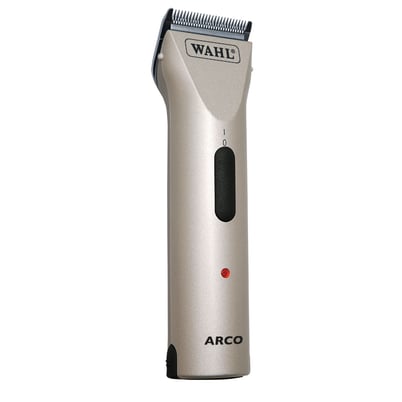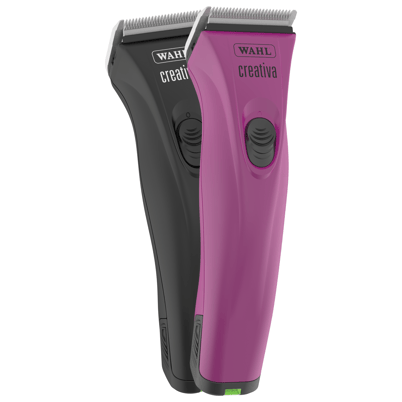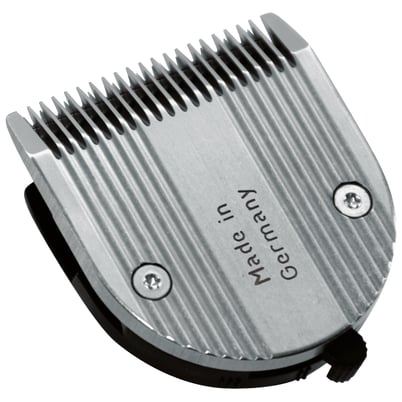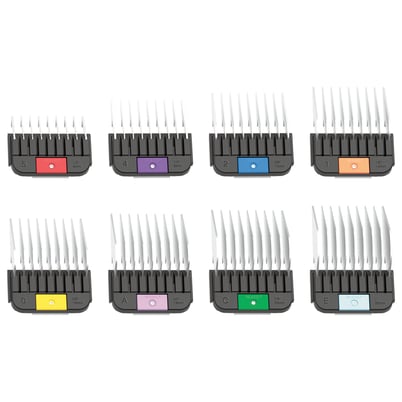With lots of choices between clippers and trimmers, it’s hard to know which is best for your horse. Wahl E.L.I.T.E. Educator Liv Gude offers her insight to help you choose the right product!
It really just boils down to your grooming routine on your horse, and how much, if any, you will clip off for shows and the winter.
Horse trimmers are cordless, lightweight, and versatile.
If you have a horse, you need a pair of trimmers at the bare minimum for your grooming supplies and your first aid kit. You may not body clip or do a lot of trimming on your horse, but horses get wounds. Clipping the hair around a wound is best so that it can be assessed and medicated properly.
Some horse trimmers, such as the Arco and the Creativa, use batteries for power. These models come with two batteries so that you can switch out if needed. A charging stand allows you to easily recharge your batteries and keep things tidy at the same time. Other models of cordless trimmers are rechargeable with a cord. This allows the trimmers to be used and charging at the same time if need be. The Bravura and the Chromado are great examples of this.
Because a trimmer is handy and lightweight, it’s easy to use in the nitty-gritty areas of your horse. A trimmer’s motor is ultra-quiet, making ears and sensitive areas easy to trim up. The smaller blades also easily navigate around legs, faces, bridle paths, and even rump designs.
You might also like to clip your horse’s lower legs. This is common for show horses, as the shorter hair is easier to keep clean and bright for the show ring. For horses with dermatitis issues on the legs, trimmers can help the coat stay short so medications can do their job. Trimmers are also nimble enough to clean up wounds.
The 5-in-1 blade on horse trimmers allows you to pick the best possible setting for your clipping needs. This blade can be changed from a #9, #10, #15, #30 to a #40. The #9 will remove the least amount of hair, which is good for legs. The #15 is good for bridle paths and ears. For even closer clipping, as in the case of a wound, use the #30 or #40 setting.
Clippers are more powerful, sometimes corded, and suited for bigger clipping jobs.
If you do any sort of body clipping or trace clipping, a pair of clippers goes a lot farther and faster than a pair of trimmers. Much faster!
The KM10 comes in both a corded and cordless version. Both are equally powerful, and can rapidly body clip your horse. Like some of the trimmers, the KM Cordless can be used while it’s charging.
Body clippers are best to use when you have large areas to clip, even if you don’t do a full body clip. This style of clipper is also more powerful, so heavily feathered legs or legs with a winter coat can be easily clipped and tidied up.
The blades are switched via a detachable system, and pop on and off easily. You can use blades that vary from a #8.5, which leaves 3 mm of hair, all the way to a #50, which leaves .4 mm of hair. For body clipping, the #10 is a popular clipper blade to use. You can also use a #10W, which is wider and gives you a faster clip.
If there’s a situation where you need to take off a little bit of hair, but not clip as close as a body clip, use detachable blade combs. These clipper guards create a physical distance between your horse and the clipper so that you are not removing so much.
You can find detachable blade combs in a variety of sizes, with the largest one giving you an entire inch of space between your horse and the blade. These combs slide on and off, and are available in metal and plastic versions. These are handy if you have an extra hairy horse and he just needs a bit of relief and a shortened coat in cold weather. You may also want to use clipper combs if you roach your horse’s mane. This gives you a much more even finish.
There are lots of options for clippers and trimmers for your horse, it just depends on what you need!
For more great tips and tutorials from Liv, check out her website Pro Equine Grooms.












